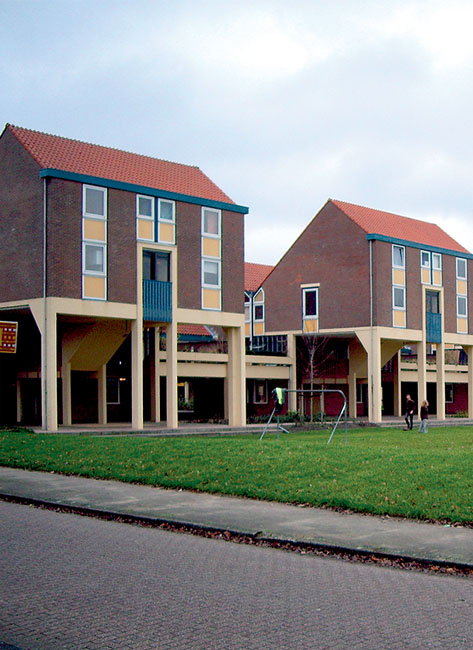De Kasbah Hengelo Piet Blom
Abstract
Inspired by the Jordaan, the neighbourhood in Amsterdam where he grew up, Piet Blom seeks to achieve a mix of life and work in his projects. There should be room not just for homes, but for small businesses and shops as well.
In 1965 Blom published the brochure ‘Wonen als Stedelijk Dak’ (Living as an Urban Roof), his reaction against the monotony of the terraced houses and flats of the time. The study is noteworthy for the idea – later applied in the Kasbah project – that the homes are situated in a closely-packed configuration on the first floor. They form a roof above a communal area that the residents will have to appropriate for themselves. By accommodating urban life on two levels, the ground floor space will be the reserve of the city’s public life. According to Blom it is not up to the architect to determine how that space is used.
Using a subsidy for experimental housing from the Ministry of Housing and Spatial Planning, in 1968 the municipality of Hengelo provided a site on the edge of the city where Piet Blom could put his ideas into practice. Seeing the plan as an alternative to monotonous spatial planning policy rather than as a local project, he was not too concerned by its peripheral location. He sought to create a living environment for a range of target groups, with dwellings that are inexpensive to build and that have a distinct identity. Kasbah is ‘an experiment for ordinary living, for ordinary people, with an ordinary income, an experiment in the field known as the social housing sector’. (Wonen TA/BK, 1969)
De Kasbah has a density of some 100 dwellings per hectare, fourfold that of the neighbouring residential areas. In the same article, Blom comments on the configuration of the homes: ‘Next: how to organize these homes? When we arrange them into rows, stacks, blocks or towers, we must add: gardens, pavements, roads, garages, parking spaces, public gardens, shops, schools, etc. In short, everything is outside, next to one another and far away. It means that later on we cannot make any changes to our projections, and these never suffice. Then it is houses as far as the eye can see – row upon row and storey upon storey – and we have no more room for manoeuvre. That is why I did not arrange the homes into rows but into a roof instead: a roof between sky and city, a roof with exactly the right number and the right size holes, admitting light and rain into the city.’
The plan features four types of dwelling: the incomplete dwelling (studio or student residence); the small dwelling with garden (patio); the ordinary, medium-sized dwelling with garden (average family dwelling). The fourth type is a combination of A and B: the large house with garden.
The ground floor level was never fully developed according to the original plan. From the moment the homes were completed, the private initiatives were slow to get off the ground. A number of workshops, a supermarket, a small children’s farm and a local pub were opened, but the corner shops proved to be financially unviable. The covered parking spaces also sparked occasional friction. The Kasbah residents were not impressed by the fact that people from nearby areas parked and tinkered with their cars here, whereas they alone picked up the tab. In 2006 the Kasbah’s green spaces were redesigned, leaving hardly any trace of Blom’s original inner courtyard design.



